Have you driven by a landscape with flowering shrubs, crowded so closely that they have had to be pruned into round, square or even cupcake shapes? It makes you wonder if it was how the landscape was intended to look. Unfortunately, there are far too many residential and commercial landscapes where much of the natural beauty of flowering shrubs has been stripped away in order to get them to fit into a space that is too small. Overplanting also increases maintenance, hinders plant health and costs more.
Let’s look at the reasons overplanting happens and what you can do to avoid it in your landscape. In most cases the solution is as simple as reading the label before buying a plant.

Noelle Johnson Landscape Consulting
Many people are fans of formal pruning, but when done to flowering shrubs, it is often the unintended result of overplanting.
A classic example of overplanting is evident in the photo here; there is room for only approximately one-third of the existing shrubs to grow to maturity. As a result, all of the flowering shrubs have to be pruned back repeatedly throughout the year.
Shown: A commercial landscape overplanted with Valentine bush and Texas ranger
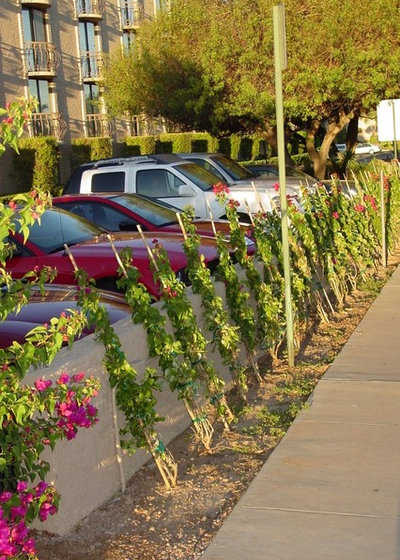
Noelle Johnson Landscape Consulting
Why overplanting happens. There are a few reasons for overplanting. People don’t research their plant choices ahead of time to see how large they will become. They see a small plant in a nursery container and don’t take time to look at the label for the mature size. The top growth will expand exponentially once a plant is put in the ground and its roots have a chance to grow.
Consumers also want to see immediate results. A newly planted landscape can look quite sparse when plants are placed with enough space to grow to their mature size. So homeowners, landscapers and even designers will sometimes add more plants than is needed to create the appearance of a more established landscape.
Shown: Overcrowded bougainvillea vines
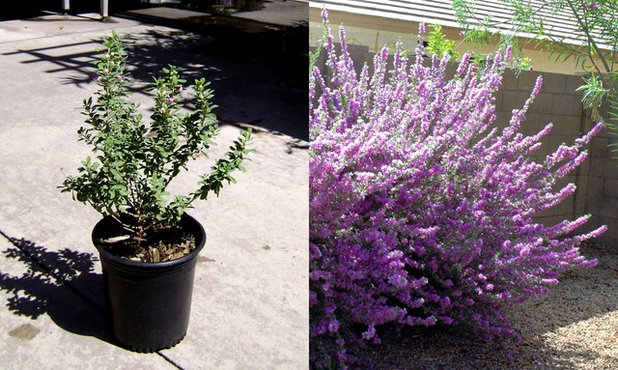
Noelle Johnson Landscape Consulting
The small shrub that you purchase at the nursery will grow and can become quite large, as shown by the Texas ranger here in a 1-gallon container and later at maturity.
If you have allowed enough space for your new plant, you can sit back and enjoy its beauty without much effort. However, if you haven’t, you may be frequently reaching for your hedge trimmer or other pruning tools to keep it from outgrowing its confined space.
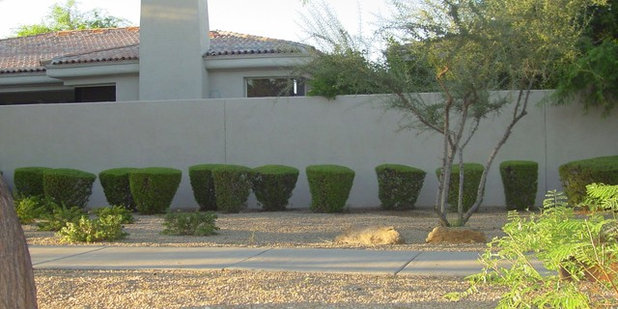
Noelle Johnson Landscape Consulting
The effects of overplanting. The most obvious side effect of overplanting is that much of the natural beauty of flowering shrubs is stripped away by the excessive pruning required to keep them from outgrowing their confined space. In addition, your wallet takes a hit with the purchase of unneeded plants and increased maintenance costs. Water is wasted by watering unneeded plants and more green waste (pruned branches) is sent to the landfill.
Overplanting also puts additional stresses on the shrubs themselves, including making them compete for a limited amount of water and nutrients. Excessive pruning can lead to dead areas of the shrubs and shorten the plants’ lives due to the stress of having to constantly try to replace lost foliage.
Shown: Overplanted Texas ranger that has been excessively pruned to one-fourth its mature size
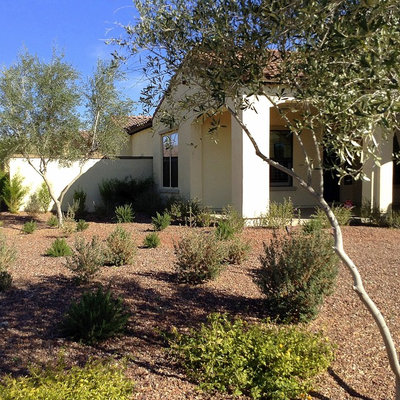
Noelle Johnson Landscape Consulting
How to tell if an area is overplanted. The fact that this newly planted landscape is overplanted is not immediately obvious. Take a closer look at the number of shrubs (there are 18) and what type they are (Texas ranger, which can reach 6 feet tall or taller), and you’ll see the problem. There is simply not enough room for them to grow.
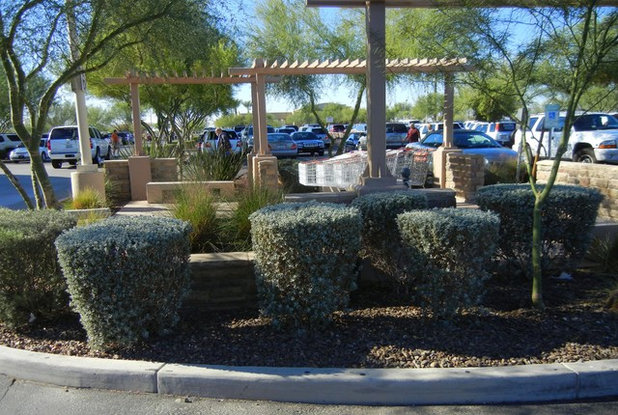
Noelle Johnson Landscape Consulting
What you can do if your landscape is already overplanted. Research your existing plants and the sizes they will reach at maturity. Remove the excess plants so that those remaining have enough room to grow to their natural shape and size (sometimes it can be as simple as removing every other plant).
Another option is to simply allow the existing shrubs to grow together to form an informal hedge, which will decrease pruning requirements.
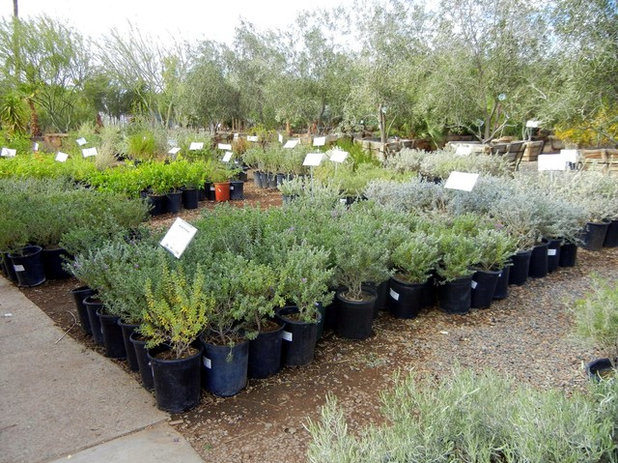
Noelle Johnson Landscape Consulting
How you can avoid an overplanted landscape. Avoiding this problem is easy. Do a little research before purchasing a plant to find out how large it will grow.
For example, a shrub that reaches 5 feet wide will take up approximately 25 square feet in the landscape. Let’s say your planting area is 10 feet wide and 20 feet long; multiply the length by the width to get the total area, which is 200 square feet in this case. Divide the total area of the landscape by the area that each plant will take up, and you are left with the maximum number of plants that will fit in a given area. For this example, 200 divided by 25 equals 8 shrubs. Of course, you don’t have to plant the maximum number of shrubs — you can decrease the amount to create additional space around each plant.
When planting a row of shrubs, make sure that they are planted at least the same distance apart as their width, which will leave them enough room to spread out. (Shrubs that are 5 feet wide should be planted a minimum of 5 feet apart from the center.)
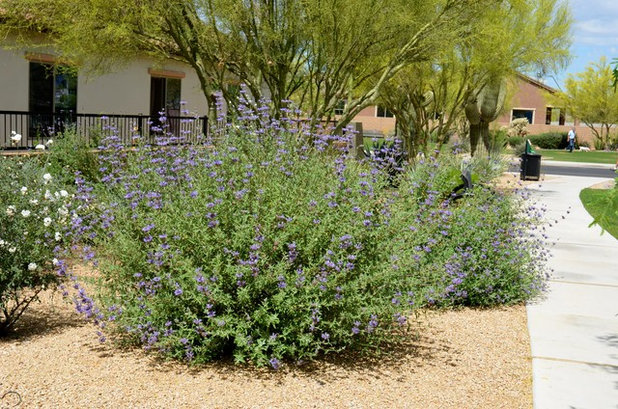
Noelle Johnson Landscape Consulting
If your landscape is being designed by someone else, take the time to look over the plan, paying special attention to the spacing of the plants. Research the plants on the design to see how large they will become and make sure that the designer has allowed enough room for them to grow.
Remember, you won’t only be saving yourself excess pruning in the future, but will also save money by not purchasing unneeded plants.
Shown: Mature Cleveland sage shrubs growing in an area where they have plenty of room
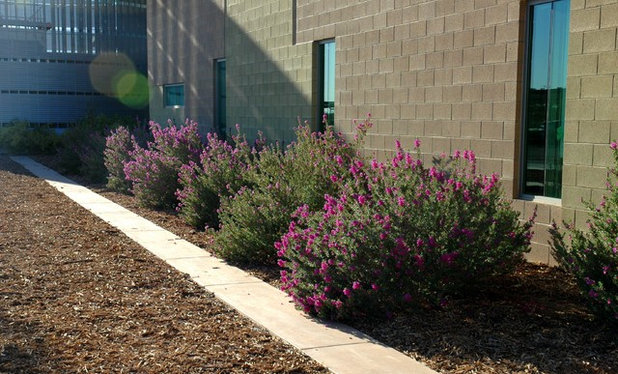
Noelle Johnson Landscape Consulting
Where you can find information on plant sizes. Often you can find that information on the plant label. However, there are many other resources, including your local cooperative extension office, which has links to online information regarding popular plants for your area and how large they will grow. Your local Master Gardeners program, whose members can often be reached by phone to give free advice, is another helpful resource.
A great way to select plants for your garden is to spend a few hours walking through a local botanical garden to observe plants, including their mature size and how they are maintained. Most plants will have signs with their names, so you can make a list of your favorites.
Profiles of many plants, written by regional experts, can also be found here on Houzz; they provide helpful information, including the mature size of plants.
Shown: ‘Green Cloud’ Texas ranger shrubs that have been allowed enough room to grow
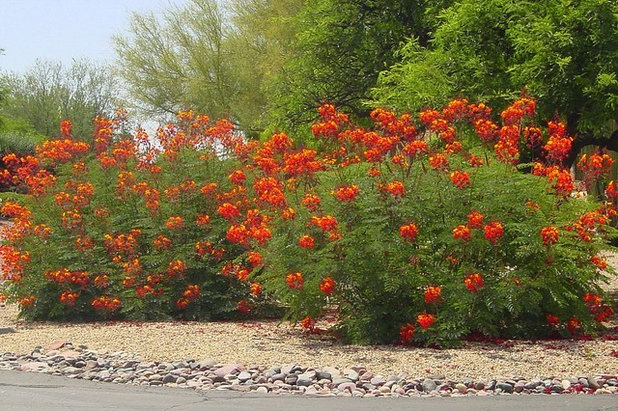
Noelle Johnson Landscape Consulting
Shrubs allowed to grow to their mature size add beauty with their flowers and natural shapes, while creating a more sustainable landscape by decreasing costs, maintenance and resources.
Shown: Red Bird-of-Paradise that has been allowed enough space to grow
More: The Simple Secret to Gardening Success





